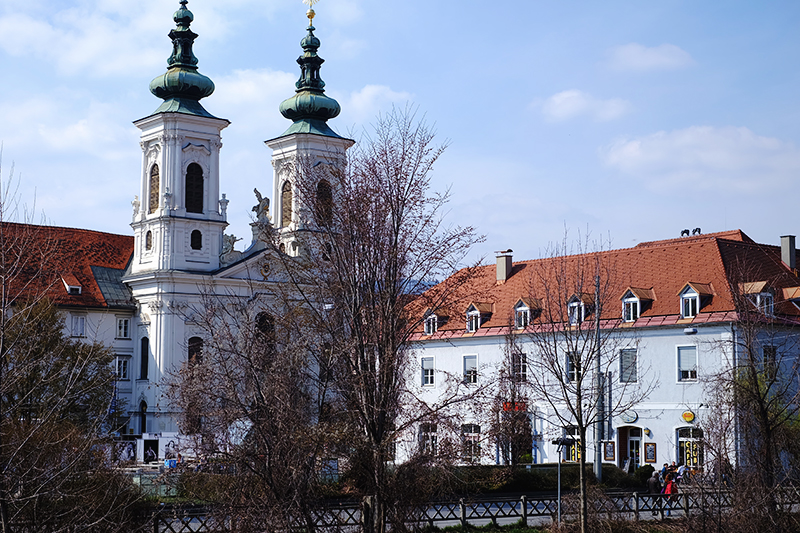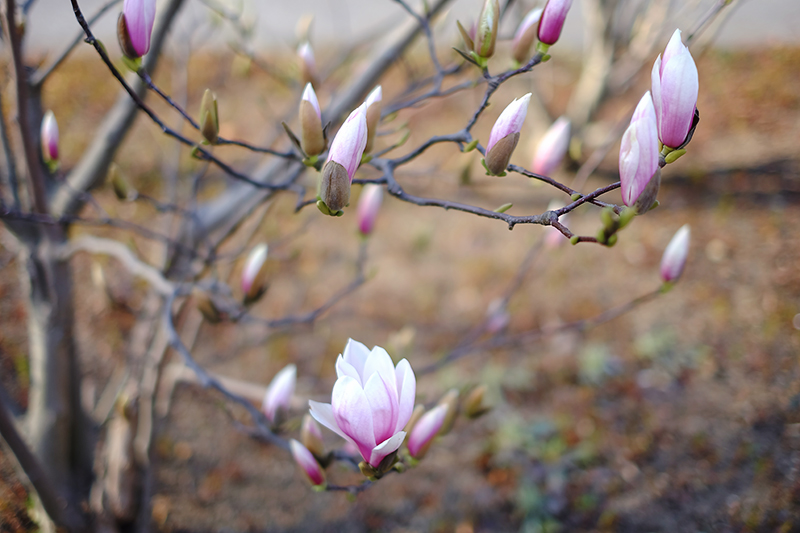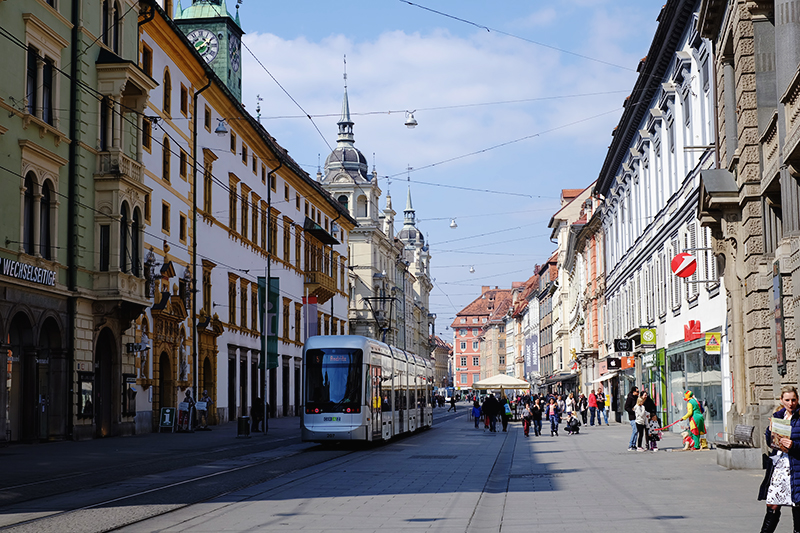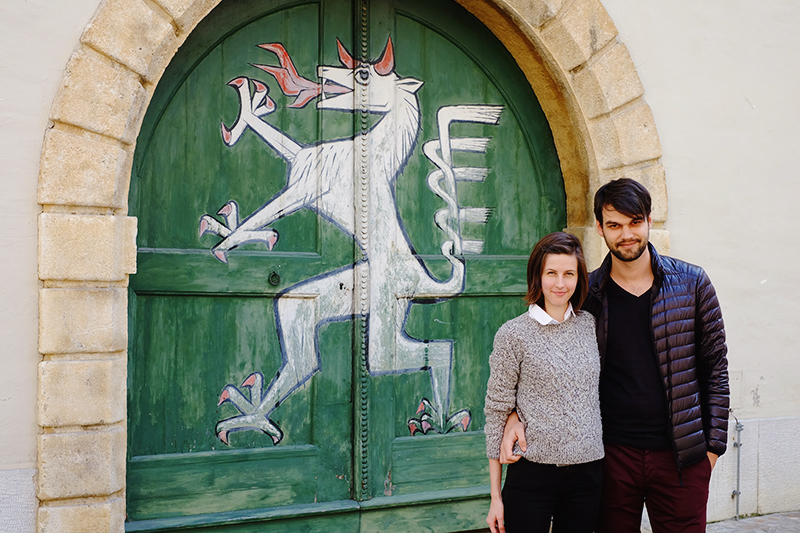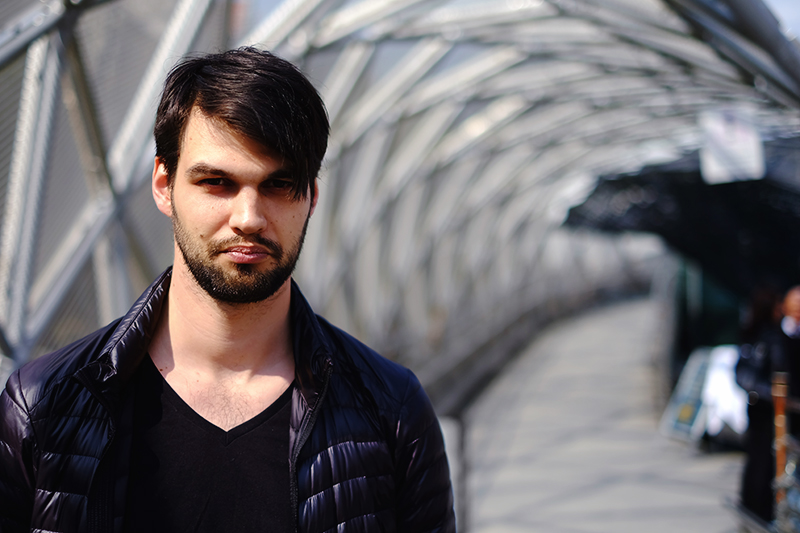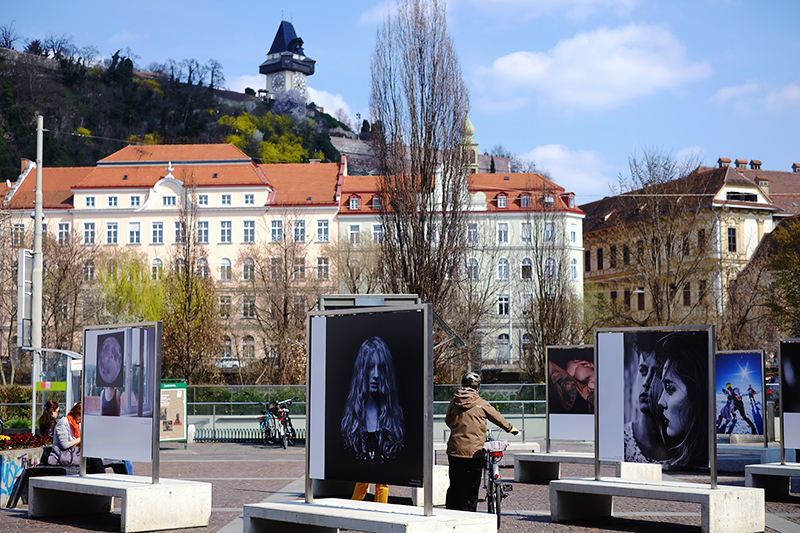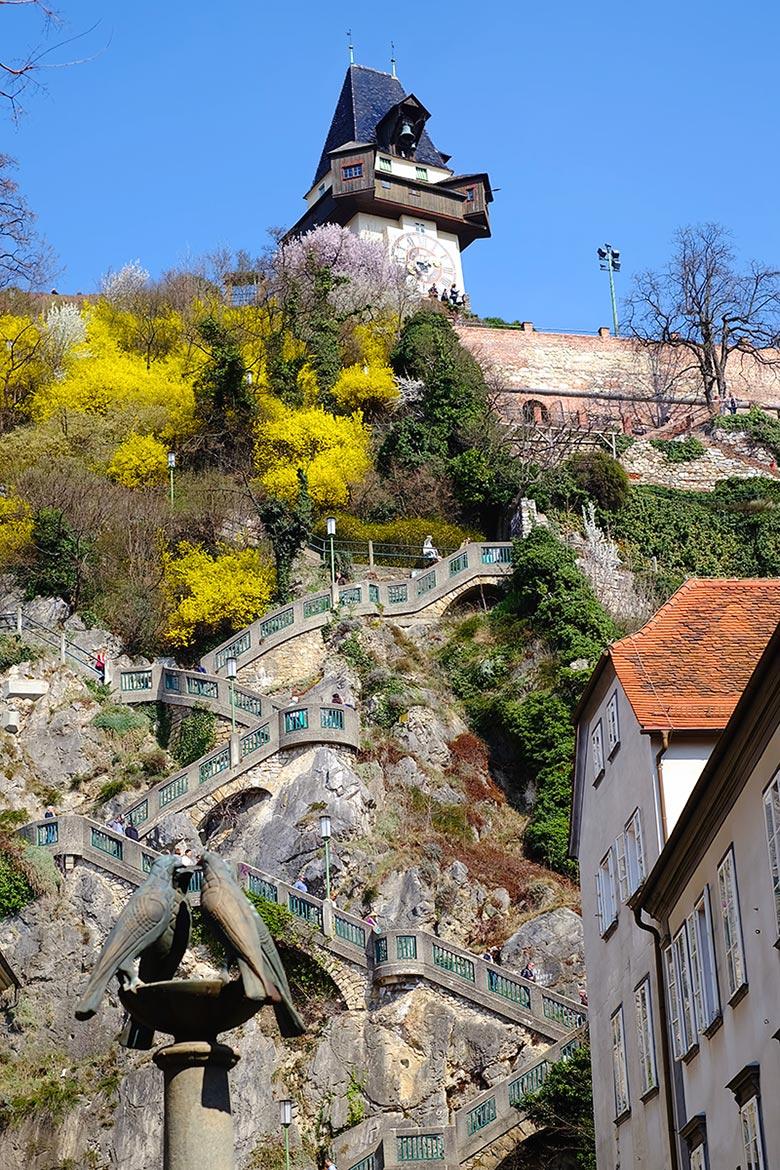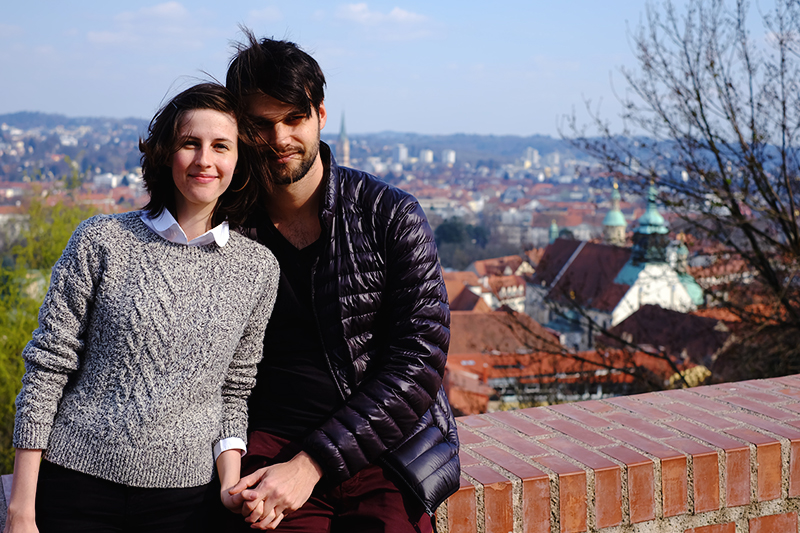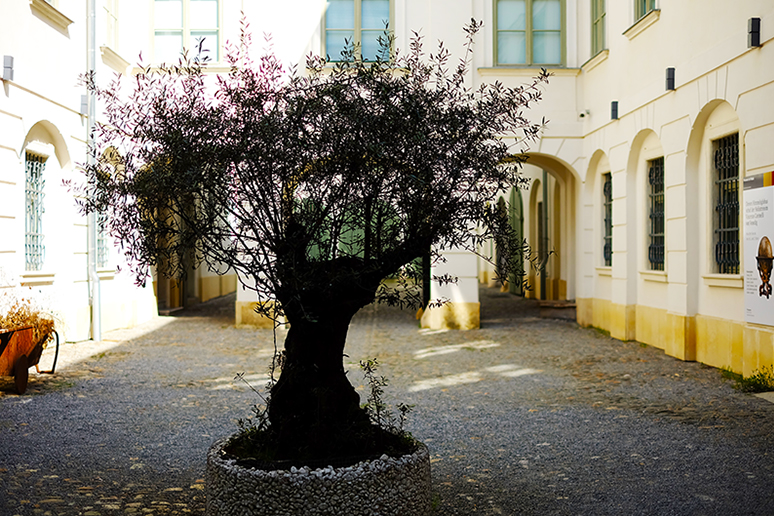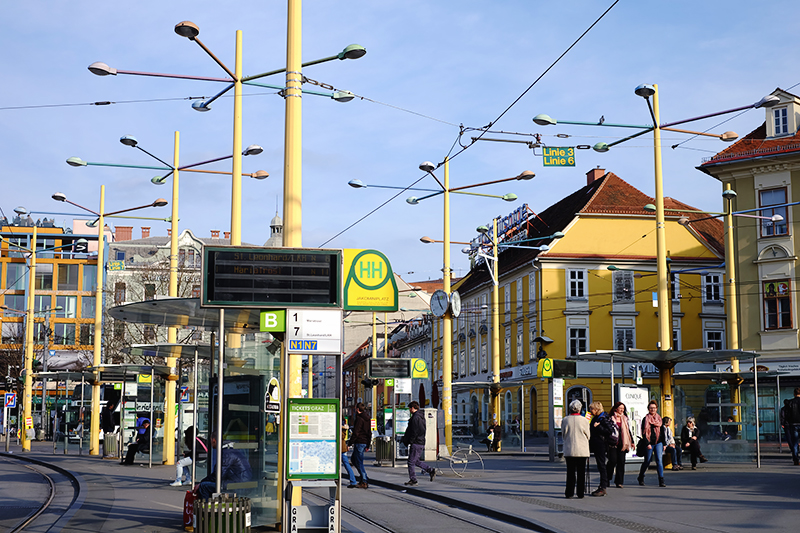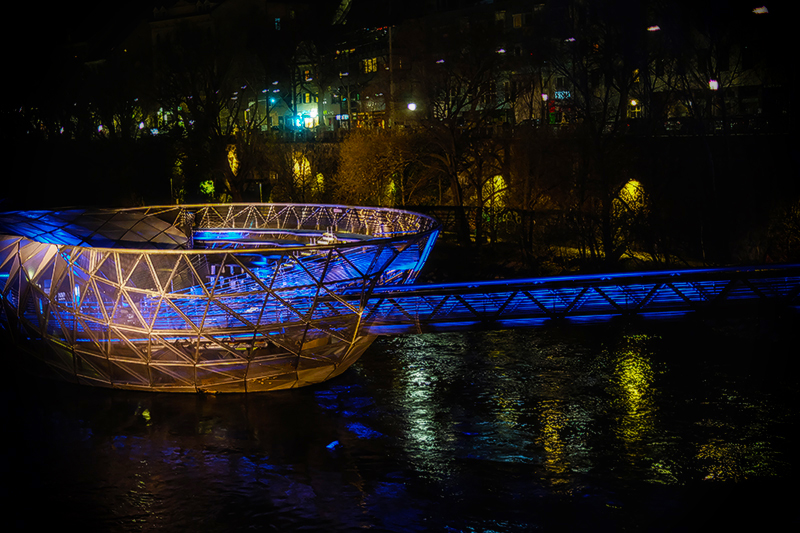I must confess — I freak out about Spring.
Having grown up in the Sonoran desert, and southern California before that, I never experienced seasons per se. In Arizona we have Palo Verde trees, which produce tiny yellow flowers in late April, but these are among the few tangible signs of a change of season. For the most part, the trees are evergreen and have very small leaves to begin with. California is much the same, just with a more vibrant green as a baseline.
But Europe is another story. These magical weeks where buds begin to form on woody skeletons, and life rapidly takes over the city. Every single flower I see in this enchanting forestland feels like seeing a flower for the first time.
It’s a resurrection, in terms of the plant life and bird song, but also the people of the city. Yesterday I waited in line for 15 minutes for an ice cream cone. Like many others there, I suspect it was our first ice cream of the year — a seminal moment in the collective city mood.

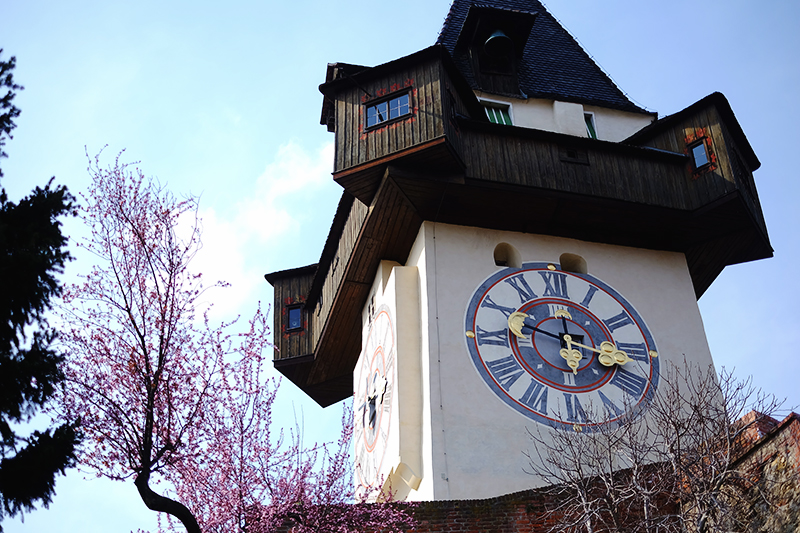
By March, the best parts of winter in Germany have long passed: Christmas markets and Glühwein, days of fluffy snow, New Years fireworks, my initial enthusiasm for dressing head-to-toe in cashmere.
For Easter we flew south for a taste of Spring and Schnitzel in what’s hailed as the northernmost mediterranean city: Graz, Austria.
Klein aber fein
Graz has earned this reputation for its narrow streets, restored Baroque-era buildings, and renaissance vibe. Pictured above is the Herrengasse, or “gentleman’s street.” To me, Graz looks like what any American pictures when imagining Europe: ornate architecture, cobblestone roads, and parked bicycles everywhere.
Beyond beauty, Graz has a number of achievements under its proverbial belt, yet remains relatively unknown to those not-in-the-know (like me). For example, its Altstadt, Old Quarter, is a UNESCO World Heritage Site, and it was named the European Capital of Culture in 2003.
300,000 inhabitants crown Graz the second largest city in Austria. Although its bigger sister Vienna is widely considered one of the most beautiful cities in the world and is worth visiting in its own right, Graz shines in its understated charm and down-to-earth vibes.
Of these 300,000 inhabitants, 50,000 are students at one of six universities. The first university, Karl-Franzens-Universität, was founded in 1585. It’s also the capital of Steiermark, Styria, the second largest of Austria’s nine federated states.


A defensible position
The name Graz stems from the Slovenian word, gradec, meaning “small castle”.
Owing to its strategic location, Graz also famously defended itself against the Ottoman Turkish invasion in the 16th century, when many other major European cities had fallen, and was among the last cities to surrender. The Landeszeughaus Graz, the Styrian Armoury contains more than 32,000 weapons.
The courtyard at the Landhaus is reminiscent of the Venice palazzo. Constructed by an italian architect, the Landhaushof boasts a Renaissance-style arcaded courtyard. Inside we find a wooden doorway donning the Styrian coat of arms.
Painted with the state colors of green and white, the shield’s silver panther looks positively mythical. Complete with a firey maul, bull horns, a horse’s head, and the mane and tail of a lion, this creature originates from the Physiologus, a book of nature history from the second century.
A city of contrasts
Graz seamlessly combines the natural and the man-made, the ancient and the modern, both form and functionality.
Take the Grazer Murinsel, translated into English as Island in the Mur. This insel is an artificial platform floating in the Mur river. Serving as a bridge between two banks on either side of the Mur, a café, an amphitheatre, and a playground, the Murinsel is one of Graz’ most distinctive landmarks. It was constructed in 2003 on the occassion of Graz being named the European Capital of Culture.


The Murinsel itself was designed by New York artist Vito Acconci to look like a sea shell. Walking across the Murinsel gives you a unique perspective on the Mur, which has become cleaner in recent decades.
Another one of Graz’ distinguishing landmarks is the Kunsthaus, a museum for art, affectionately introduced to me by every Grazer as “the friendly alien.” Again, it’s striking to see the contrast between such a modern, otherworldly structure and the traditional red-roofed buildings that neighbor it.


The view from above
One place where history of Graz shines best is the city’s most iconic landmark, the Grazer Uhrturm, the Clocktower of Graz, located on the Schloßberg (literally: castle mountain).
As the highest point in Graz, the Schloßberg provides a magnificent panoramic view of the city. Since Graz is so walkable and compact, I had the false impression that it was actually quite small. But the view from the Schloßberg proved me wrong.
Historically, the Schloßberg served as the location of fortress, with fortifications beginning in the 10th century at the latest. Although never conquered, the castle was largely demolished by Napoleon’s forces in the late 19th century.
Below the berg is a tunnel system, which was constructed during the second world war to protect the civilians of Graz from aerial bombing.
There are four main ways to ascend the Schloßberg. The most picturesque of these is this steep staircase that winds up the hill, and probably offers an interesting view, as you get closer to the top.
But I wouldn’t know first-hand — we took the less strenuous path, meaning, we rode the Schlossbergbahn. From the bottom, climbing in at the back of the bahn offers a front-row seat going up. But staying in the front provides an impressive view of the city through the glass windshield.


At the summit, Graz greets you with a sweeping view of the city. Spotting Graz’ landmarks like the Mariahilferkirche, the Kunsthaus, university buildings, and the Murinsel is done with ease. On a clear day, it’s possible to see far past the official city limits into neighboring towns.


Atop the Schloßberg, you’ll find a garden, sculptures, tons of flowers (my favorite!), some leftover cannons, a café, a café/bar, as well as the Kasemattenbühne — a ruined bastion turned open-air concert venue.
Die Gassen von Graz_, the alleys of Graz_
On a warm Spring day like ours, a sunny spot at the café was not to be found. We descended the hill by foot, along the way observing blooming flowers and cherry blossom trees. At least I can say that the path down was not strenuous, and we soon found ourselves back on the Sporgasse (pictured left) and stopped for a coffee at the Schauspielhaus Graz, the city theatre.


Speaking of the narrow, cobbled streets of Graz, just perpendicular to Sporgasse is Sackstraße (pictured right). Home to local businesses, cafés, bakeries, this street really makes you feel like you’re in a venerable European town.
Welcoming archways hint at sunny courtyards beckoning for exploration. In some you will find a place to drink a coffee or sip a glass of wine. These courtyards are yet another feature that support Graz’ claim as the northernmost mediterranean city.
Sackstraße is also the location of Kastner & Öhler, a department store with a rooftop café providing a view over Graz’ famous red roofs as well as a view on the Uhrturm.
Here’s a glimpse at a few other spots around Graz —
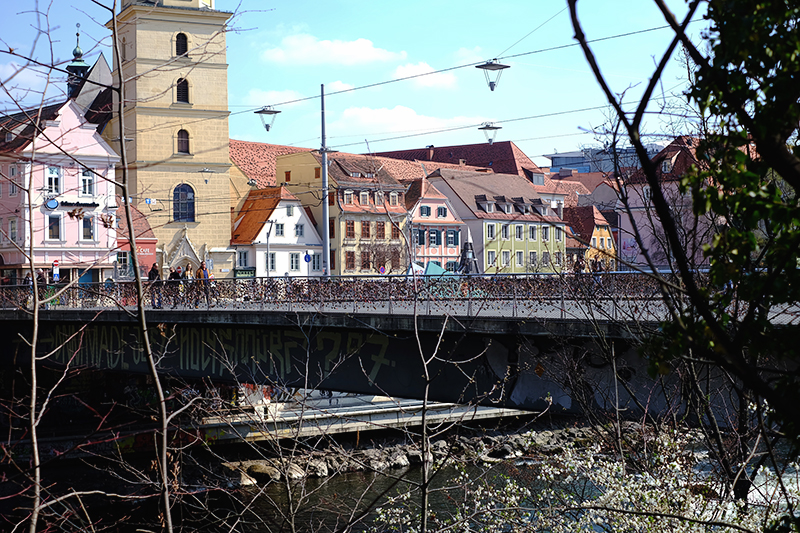
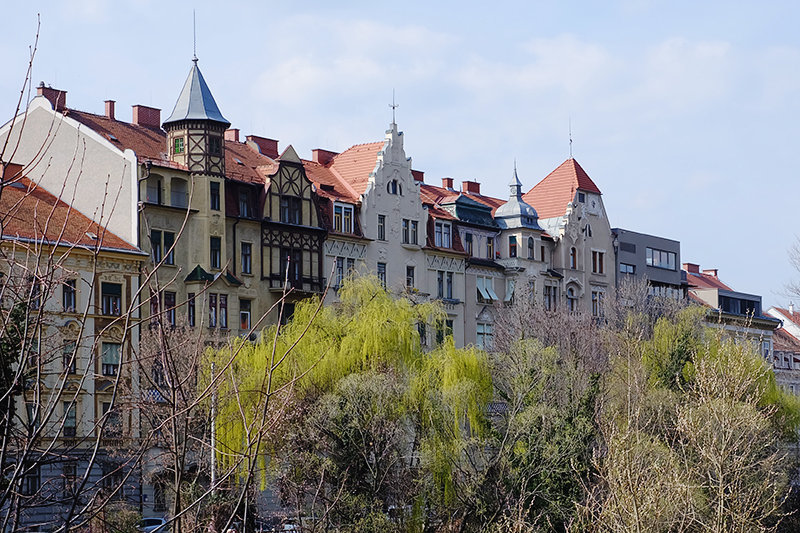
Graz by night
After being named Cultural Center of Europe in 2003, Graz invested in illuminating its landmarks.
Somehow everything feels a bit more massive and spread out when it’s glowing. As a group of four, we ventured into town for a drink and a bite to eat. On the way to and from The Pub, I enjoyed the visual contrast of these places to their daytime versions.
The Murinsel’s bright blue lights bridge the banks of the Mur, and it’s possible to peek through the glass for a view on diners. Seriously, how cool does this look? Though I wonder if the interior of the restaurant has a blue hue cast over everything (which might make your meal look a bit mutant).
Mariahilferkirche (pictured right) and its associated Platz leave the art installation available to view into the night. Similarly, the Uhrturm’s path up the hill looks somehow otherworldly or anachronistic. Kind of reminds me of the stairs leading into Mordor…but then again, my strong associations between Europe and Middle Earth may be at fault here.


Graz(ie)!
For me, Graz was especially interesting in how different it is from my adoptive home of Berlin. It has all the features one typically associates with beautiful European cities. But beyond that, Graz is also unique, especially owing to its mash of modern and historic scenes and influences coming from Northern Italy and Eastern Europe.
As the most famous Styrian in modern times once said: “I’ll be back.”
